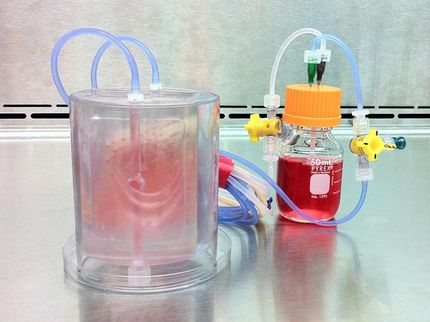From stem cells to new organs: Stanford and NYU scientists cross threshold in regenerative medicine
Research in the FASEB Journal clears major hurdles for bioengineered replacement organs
Advertisement
By now, most people have read stories about how to "grow your own organs" using stem cells is just a breakthrough away. Despite the hype, this breakthrough has been elusive. A new report published in The FASEB Journal brings bioengineered organs a step closer, as scientists from Stanford and New York University Langone Medical Center describe how they were able to use a "scaffolding" material extracted from the groin area of mice on which stem cells from blood, fat, and bone marrow grew. This advance clears two major hurdles to bioengineered replacement organs, namely a matrix on which stem cells can form a 3-dimensional organ and transplant rejection.
"The ability to provide stem cells with a scaffold to grow and differentiate into mature cells could revolutionize the field of organ transplantation," said Geoffrey Gurtner, M.D., Associate Professor of Surgery at Stanford University and a senior researcher involved in the work.
To make this advance, Gurtner and colleagues first had to demonstrate that expendable pieces of tissue (called "free flaps") could be sustained in the laboratory. To do this, they harvested a piece of tissue containing blood vessels, fat, and skin from the groin area of rats and used a bioreactor to provide nutrients and oxygen to keep it alive. Then, they seeded the extracted tissue with stem cells before it was implanted back into the animal. Once the tissue was back in the mice, the stem cells continued to grow on their own and the implant was not rejected. This suggests that if the stem cells had been coaxed into becoming an organ, the organ would have "taken hold" in the animal's body. In addition to engineering the stem cells to form a specific organ around the extracted tissue, they also could be engineered to express specific proteins which allows for even greater potential uses of this technology.
"Myth has its lures, but so does modern science. The notion of using one tissue as the scaffold for another is as old as the Birth of Venus to the Book of Genesis," said Gerald Weissmann, M.D., Editor-in-Chief of The FASEB Journal . "Eve may or may not have been formed from Adam's rib, but these experiments show exactly how stem cell techniques can be used to turn one's own tissue into newly-formed, architecturally-sound organs."
Original publication: Edward I. Chang, Robert G. Bonillas, Samyra El-ftesi, Eric I. Chang, Daniel J. Ceradini, Ivan N. Vial, Denise A. Chan, Joseph Michaels, V, and Geoffrey C. Gurtner; "Tissue engineering using autologous microcirculatory beds as vascularized bioscaffolds."; FASEB J. 2009 23: 906-915.



























































